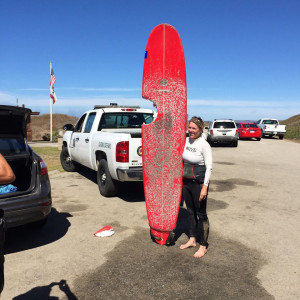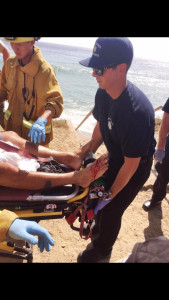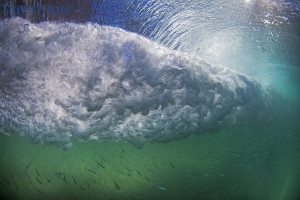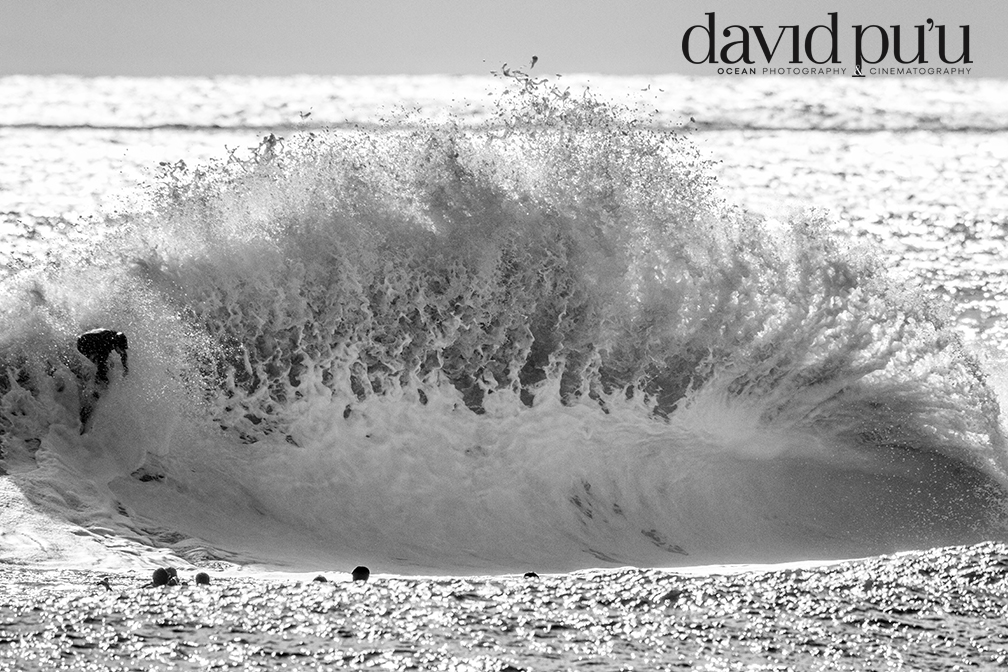Ocean Life and the Great White Shark
In recent months the reports of white shark (Carcharodon carcharias) activity in California have literally exploded in number, with videos, many of them shot from UAV (Drone) camera platforms, news articles and reports via the ocean community grapevine, indicating with little doubt, we have more of the species appearing in near shore waters than I can ever recall.
So what is going on?
The CDFW (California Department of Fish and Wildlife) lists the total number of “Incidents” in California waters between humans and the White since 1950 as 101. It is unclear what they classify as being an incident. One thing sticks out in my mind when reading CDFW and other Orgs data however: not a heck of a lot is known about this ancient apex predator to any great degree of accuracy.
I say that for many reasons, first being because I alone, have had over 51 white shark incidents. I am one guy. What do I call an incident? A sighting which consists of a close up positive ID of the species which may or may not include menacing or aggressive behavior, up to and including physical contact.
I also have had multiple people I know, be predated over my 54 years in the Ocean, and have worked with and around some of the more reliable and authoritative Ocean Photographers and Cinematographers specializing in documentation of the White Shark. We all talk about what we learn in our work.
In the CDFW data, they state that sight is the tool of first use employed by the White in the predatory (hunting) process. That is incorrect. The species possesses a sensory array that allows them to detect and define electrical impulses of minute intensity from distances of over 10 miles. They also have a remarkable ability to detect blood scent at an extraordinarily long range as well. Actual visual acuity is engaged only when prey has been located via the prior two tools. In a predation, a nictating membrane rolls over the eye, protecting it from damage. Sight is not how they locate you initially. In fact sight is minimally involved in the predation process for the white. The creature simply is as one with it’s environment. We might want to take a lesson from it.
Since I swim with a camera, and both my body and camera are charge devices, and I am in the water during twilight frequently, that is a large part of the reason I encounter the White somewhat regularly. They will come to check me out and utilize the dim light to their advantage in the hunt. By the way, for humans, twilight is when our eyesight is at it’s absolute worst in terms of accuracy as a sensory device. Keep that in mind as we proceed here.
So what IS going on, with all of the white shark sightings and incidents?
A few years back we had a juvenile white which stuck around the area for over two years. I would see it all the time. First time I have had that happen. And just as things appeared to have gotten out of hand, and it looked as if I might need to cull it for safety’s sake (My own and the community’s) it disappeared.
Whites are thought to reach sexual maturity at anywhere between 7 and 30 years of age. Males first. Females years after. Yes, that is what published research themed papers say. I know that this is broad and ridiculous in terms of being relied on as accurate, concrete data. Different researchers all having differing opinions. (Opinions are not necessarily data. To be so one must frame the experience and reference points of the researcher) For example, someone who has read about sharks has a potential differing data set than the commercial diver who spends a lifetime in the sea managing shark interaction in the course of their work. Each would have possibly divergent levels of info intimacy on the shark genus. One is repeating the statement of someone else while the other is a first hand witness whose voice is a first hand narrative account.
This is a common circumstance today and frequently creates the disparity we find between online published statements and the “hard light of day” reality of the Ocean community.
White Sharks engage in live birth and generally are thought to have a gestation period which ranges between twelve and eighteen mos. They are thought to give birth to between 2 and 14 “pups” per cycle. Pups range in size between 3 and 5 feet depending on the age-size of the Mother, and number of young she bears through gestation.
They are born ready to engage as predators, and many believe adult females intentionally give birth in places which present the least environmental threat to their young. Some call these places proving grounds, where the young can stay near shore, frequently in shallow waters, feeding on smaller fish and marine life before moving out into deeper waters in search of fatty (and higher calorie) prey before eventually adding larger mammals and pinnipeds to their diet as they reach maturity.
Make no mistake about this. It is an old wives tale that shark’s “don’t like” humans in terms of being food source. We as a species are apex predators, but we are made of meat, and some of us have sufficiently high fat content in our body mass index to fit quite nicely into the White Shark’s diet plans.
White sharks predate their own species. So it is not logical to believe they will not predate a human. Plus, our behavior in many ocean activities frequently creates the appearance of taunting or teasing the shark. (Think about how we are with a domestic cat or dog of our own, when they swat at us, and or romp)
Keep in mind that as a species, we are traditionally not menu items because we are land inhabitants. However more people than ever in our history are in the Ocean today. Things are changing.
Right now a fairly large number of young whites and other sharks are in the area. To me, it looks like a couple breeding cycles worth of whites from what I am seeing, based on sizes.
Due to our hot water event, a large volume of normally tropical fish are near shore off the California Coast. Couple that with the El Nino Southern Oscillation we are in, and this condition of high and exceptionally large biomass increase could be in place for some time. Simply put, the Ocean is quite alive and the sharks are an integral part of that cycle.
So these young whites will not need to transition offshore into deeper waters. In fact, as the Fall migration engages, we could see greater frequency of larger migratory whites near shore as well. I have experienced white sharks in the 12-18 foot range multiple times when holding the camera in dawn’s light. It is always pretty interesting, and not as alarming as it may sound to some. Do not mistake that statement as me being flippant regarding the Great White. I am far from that. I know who runs the water. And it is not me.
Why?
Several reasons. First being the predatory pattern they engage. Typically whites hunt off the bottom to strike at prey located towards the surface. They also engage other environmental factors, which would cause prey to be unaware of the shark’s presence. In most of my more active encounters, I never saw the white dorsal, they simply came off the bottom with the light source behind them, to buzz or bump me.
This is a video clip of a textbook predation by a Great White Shark. (Sent along by fellow Photographer and EMT Charlie Witmer.
So what does one look for? How do you manage and-or avoid an encounter with a white shark?
Here is the short list.
1. Don’t be where they are. Watch the water. Know your water. If whites have been sighted in the area recently, you want to avoid dawn and sunset swims and surfs, as that would lower your risk.
2. Stay very calm. When getting excited or agitated, your body releases both chemicals and electrical pulses that mimic those of prey in distress.
3. Watch the surface and the bottom. Avoid murky water. If there is a lot of marine wildlife in the area on the surface, acting normally, that is a sign. If all of a sudden you experience that wildlife begin to exhibit agitated behavior, OR suddenly disappear, leave the water.
4. When filming white sharks we use something called a cookie, that resembles a young seal, which is attached to a line and towed repeatedly across the surface. Don’t exhibit behavior that makes you bear the appearance of being a young slow seal. Some of the worst human predations which were not survived, involved bodyboards or kneeboards. One particularly brutal one involved a woman who regularly would intentionally swim with seals in an area known for hosting large great whites.
5. Pay attention to your instincts. I have noticed two very pronounced and different “feelings” in both my own and others that I have spoken with, who have had shark encounters.
A) Feeling one. Hair goes up on the back of your neck and you feel as if you are being watched. You are.
B) Feeling two. A sense of deep dread. You feel as if something very bad, like a car wreck or other potential life ending episode is about to occur, leave the water immediately.
6. If you come face to face with a white and are under imminent threat, keep a close eye on it. Literally. You stare the shark down while maintaining a ready posture. The reason we do this is because it not only informs us of the shark’s intentions more readily, but because the stare puts an element of doubt in the shark’s mind about who the predator really is (You).
7. If the shark comes at you, be ready to fend off and avoid the jaw area. One of the most amazing things I ever saw, was in some footage Greg Huglin showed me, after a very large white had swum up on me earlier in the day while I was holding what he calls the shark cam and doing some motion picture work. It was footage of SA shark diver Andre Harteman surviving a double predation effort by an approx. 16 foot great white. He successfully fended off by keeping a close eye on the animal and reacting perfectly.
In summary, the ocean is very alive right now. The sharks are going to be there in the near shore waters in greater than usual numbers. Be aware, and learn how to live in and around them, and chances are that although you may have “incidents”, you will never ever become shark poo. Being in the ocean, especially for those who know her well, is a heck of a lot safer and healthier than being just about anywhere else, especially when one perceives it as Home.
Aloha nui loa.
(You can click on any of the images in the post to enlarge them)








Well-written piece David! 🙂
Mahalo, Martine! We had a drowning here at the harbor this past week, BTW. Rescue Swimmers were chased out by a relatively large great white. Best to be prepared. Sharks are a good sign in many ways of ecosystem health and changes, as well.
GWS actually don;t have a necessitating membrane like other shark species.
They just roll their bright BLUE eye back for protection.
Unfortunately I have see that eyeball a bit too frequently. Fortunately I am still around! LOL!
Yep. They roll their pupils back. Thanks Greg.
Thanks Greg! You would know better than most anyone.
David you are THE MAN. What a great enlightenment on GW’s.
It should be required reading by ocean goers and the so called professors of marine activity.
My prayers are with you.
Semper Fi
Honored to see your note pop up on here Mr. Mors! Thank you.